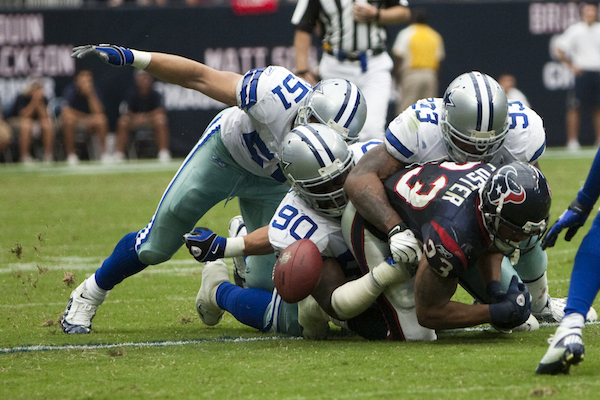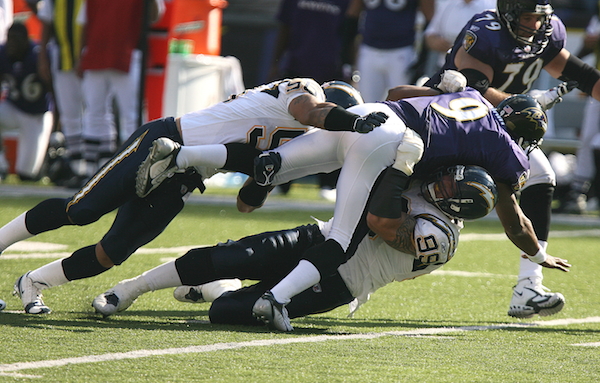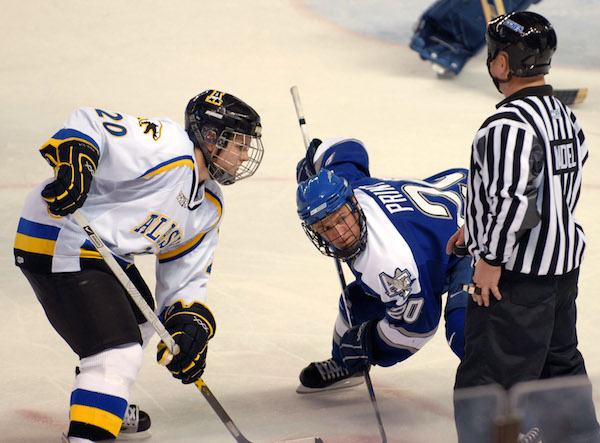In our first two posts on brain injuries and football we covered the consequences of brain injuries and how and when they happen during a football game. Today, we’ll answer the question of why people who care about, participate in, or own and run football teams should care about brain injuries. We’ll focus on the National Football League (NFL) in particular. The question may seem almost rhetorical to anyone who has a heart and has seen first (or even second) hand the terrible effect of brain injuries on a person but it’s not. Think about it this way. The cigarette and alcohol industries are still going strong and those products are usually harmful and sometimes fatal to their consumers. Football is only usually harmful and sometimes fatal to its workforce!
The first reason for why football should care about the damage it does to its workforce is the most obvious one: it’s unethical to employ people to do something as dangerous and unnecessary as football. Football is an entertainment product. If Hollywood actors were disproportionately suffering from early onset dementia and dying premature deaths, you can bet that Paramount pictures executives would be stumbling over themselves trying to solve the problem. Football is no different. That said, it’s probably unrealistic to expect that real change could come from this reason alone. There are too many convenient and legitimate rationalizations available to football decision makers: the science is unclear, players know what they’re getting into, life-changing salaries are a good enough reward to offset the risk, etc. We need more persuasive reasons.
If hitting football in the heart isn’t enough to create change, how about the wallet? This process has already begun. In the fall of 2013, the NFL settled in a class action lawsuit with 25,000 retired players and 9,000 relatives of deceased players. As part of the settlement, the NFL agreed to spend $765 million dollars on health care and compensation for retired players with any signs of dementia. That’s a lot of money and it may not be over. Just this week, Sports Illustrated ran a story about a group of around 220 retired players and their families who have opted out of the settlement. Why would they do that? According to Michael McCann, who wrote the story, the potential benefit is that “the NFL might offer improved settlement terms as a way of inducing the players to drop their new lawsuits. Or, should these lawsuits go to trial and juries hold the NFL liable, the potential damages assessed by jurors could be massive and far eclipse settlement payments.” The NFL is a powerful organization with an immense ability to represent themselves in all aspects of legal and political conflict but as long as these concussion lawsuits continue, they are vulnerable. Brain injuries are expensive.
Facing a threat from one end of the football spectrum, retired players, the NFL cannot lose sight of an equal threat from the other end: youth players. Unlike professional soccer teams in Europe, the NFL does not get most of its players through team-run youth academies. Instead, they rely on the many youth football leagues, like Pop Warner and American Youth, to get young football players started on the path to the NFL. Later, academic institutions take over as kids go through high school football and then through the virtually semi-professional ranks of major college football. This all costs a lot of money and the NFL doesn’t have to spend any of it. Using ESPN’s remarkable collection of expenses from major college football programs in 2008, we know that the top 119 college football teams cost a total of 5.4 billion dollars. Of course, they make almost that much in revenue today but the NFL could not expect that side of things to stay the same if they ran college football as a minor league developmental program. Youth football programs find great football players, train great football players, and they make celebrities out of them and the NFL benefits from all of this without paying the players or the organizations a single cent. Brain injuries are a real threat to all of this free player development that the NFL relies on.
In the past few years, lots of very public figures, influenced by the news about brain injuries, have stated that they would not let their sons play football: President Obama in 2014, sports writer Michael Wilbon in 2010, hall of fame NFL player and coach (and SNL subject) Mike Ditka in 2015. Even some NFL players have gone on record saying they wouldn’t let their kids play football. This has begun to have an effect. Steve Fainaru and Mark Fainaru-Wada reported for ESPN that “The nation’s largest youth football program, Pop Warner, saw participation drop 9.5 percent between 2010-12, a sign that the concussion crisis that began in the NFL is having a dramatic impact at the lowest rungs of the sport.” When the well starts to run dry, you bet the barons are going to worry about what’s stealing their oil.
The last reason why the NFL should care about brain injuries is purely speculative and far more anticipated than observed. Eventually, people will tire of watching the NFL if nothing is done to fix its brain injury issues. So far, television ratings do not support this thesis one bit but it’s hard to imagine that the popularity of football could continue forever without being damaged in some way by the growing popular understanding of the damage the game does to its players. The court of public opinion sometimes has a long appeal process but eventually the jury’s ruling will sink in if nothing can be done to fix football’s brain injury problem.
Tomorrow we’ll continue our series of posts on how to fix football with a discussion of the NFL’s history of rule changes and which elements of the game are most or least open to future changes. If you want to read more on today’s subject, I recommend Kevin Greir and Tyler Cowen’s essay in Grantland called “What would the end of football look like?”
Dear Sports Fan provides resources for living in harmony with sports. If you enjoy our content, please share it with your friends and family. If you haven’t signed up for our newsletter or either of our Football 101 or 201 courses, do it today!





